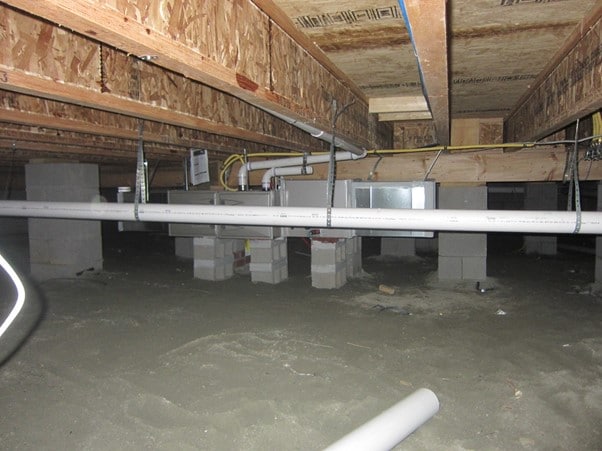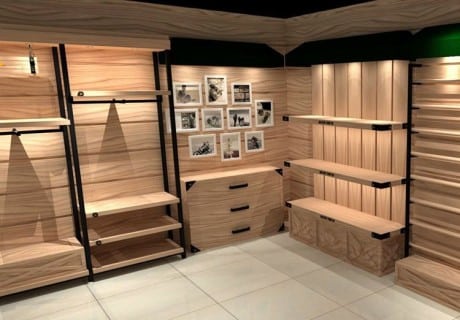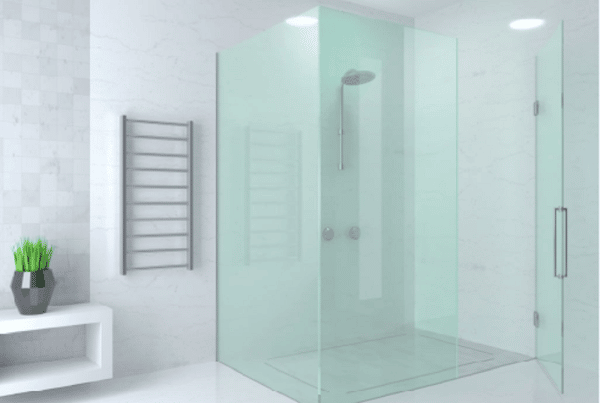Crawl spaces are a common feature in many homes. Often, people will use them for storage or to create extra living space.
But is a crawl space considered to be a basement? The answer to this question is not as simple as it seems. In some cases, the answer is yes and in others, the answer is no.
One way of determining if your crawl space counts as a basement or not would be by looking at what you are using it for.
If you are using your crawl space purely for storage, then that would mean it’s just an attic with low ceilings rather than a full-fledged basement.
In this blog post, we will be discussing what crawl spaces are and how they differ from basements.
We’ll also discuss the differences between basements and attics as well as whether all parts of your home should have insulated PEX pipe and PEX insulation installed.
Crawl Space Vs. Basement
Crawl spaces are often used for storage and to provide extra living space. Most people would consider these crawl spaces to be just attics or rooms with very low ceilings, but the truth is that crawl spaces may also be considered basements.
For a space to constitute a basement, it must be used for more than just storage. Basement spaces will be primarily used for living and there will usually be some type of built-up area (such as a living room).
There are multiple factors that may affect whether something will count as a basement. For instance, if you are using your crawl space as an office, then it’s probably not going to count as a basement.
If you are using your crawlspace strictly for storing items and it has low ceilings (less than ten feet), then this most likely qualifies the area to be merely an attic. However, if there is any type of built-up area in your crawlspace and it is primarily used for living, then this space could be
Choosing Between Basements and Crawl Spaces
We are going to be talking about basements and crawl spaces. Basements can be defined as an underground room with at least a part of its floor below grade level. They can also have windows or doors, and they will be partially built or fully constructed.
The word “basement” comes from the French term “une cave,” which simply means a cell or dungeon. Crawl spaces are typically found on the ground floor, and they house pipes, ducts, ventilation systems and even heating units like furnaces.
They’re usually not divided into rooms because there’s no need for windows and doors because it’s just open space.
Basements are great for storage purposes because of their large volume, and this is the main reason why they’re so popular. Basements have a lot more space than crawl spaces, which means that there’s room to store furniture or even exercise equipment if the homeowner chooses to do so.
However, basements can be difficult to work in as well. Basements are not well-lit, and they can have a damp or musty smell as well because of the moisture that’s down there.
Crawl spaces may be an option for homeowners who don’t want to spend too much money on their home improvement project but still need more storage space than what’s available in the average house.
They’re a good option for homeowners who don’t plan on living in the home forever because they can be converted into an above-ground basement. Crawl spaces do have their disadvantages as well, however: there’s little to no natural light and crawl spaces are usually very dusty or dirty.
Basement And Its Pros and Cons
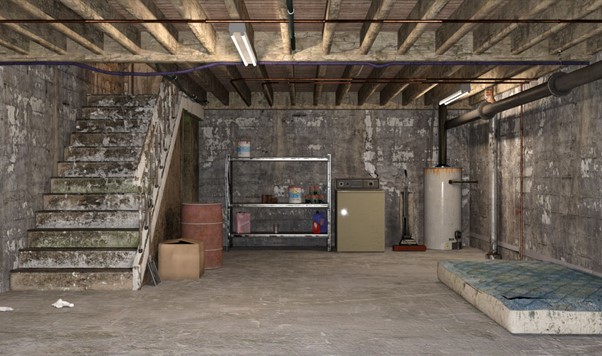
Basement Pros
- The storage capacity is far greater than a crawl space
- Reduces the risk of damp or musty smells because it’s above ground
- Can be used for exercise equipment when there’s no room elsewhere in the house
- Great natural light and well-lit to store furniture as well
Basement Cons
- It’s difficult to work with because of the lack of lighting and space
- There is a risk for musty smells as well as mildew growth when it’s below ground level
- The cost may be higher than an average crawl spaces conversion. Homeowners will have to rely on building materials that can support the weight.
- The basement has a larger storage capacity than a crawlspace, but they’re more difficult to work with because of their lack of natural light and difficulty in getting around – it’s easier for homeowners to get lost or confused in dark basements that are poorly lit.
Crawl Spaces and Its Pros and Cons
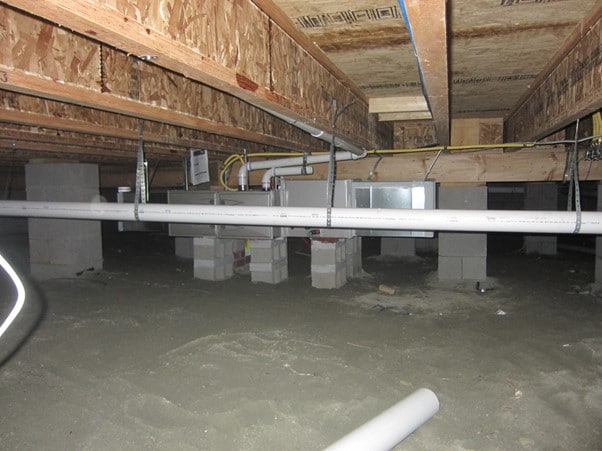
Crawl Spaces Pros
- The crawlspace has limited storage capacity, but they’re more accessible and cheaper to convert into an above ground basement • Crawl spaces are less expensive than basements – this is the main reason why people choose them over a full-size home.
- They have better ventilation because it’s not underground like in a basement
- It’s not as stressful on the homeowner because it’s less likely to cause health problems like asthma
Crawl Spaces Cons
- It can be dusty or dirty, which means that homeowners may have allergic reactions
- The crawlspace is more difficult to work in and work out of – there are generally no windows or doors. The homeowner will be making the best of what natural light there is.
- Crawl spaces are usually not deep enough to store furniture or other large items because they’re generally found on the ground floor and don’t have a lot of head room.
Frequently Asked Questions
Why Would You Want to Have a Crawl Space?
Crawl spaces provide without sacrificing living space. A crawl space may be a preferred alternative to an additional basement in some homes because it doesn’t take up valuable square footage for each new foot of height.
Basements can cost anywhere from $50 to $100 or more per square foot to build, while crawl spaces cost about half that amount – often pegged at between $25 and $35 per square foot.
Crawl spaces also allow for natural light and ventilation that most basements lack. Finally, there is the safety factor: Most builders believe they are safer than a basement since they generally don’t flood as easily and do not require using stairs.
How Can You Tell If You Have a Crawl Space or Not?
One way to tell if you have a crawl space is by looking for vents and duct work in the ceiling of your basement. The vents are usually located in the soffit, and they will lead to a crawl space.
If you don’t see any such vents, it may be because your basement has been insulated – which can make ventilation difficult for both basements and crawl spaces.
The other sign that you might have a crawl space is if there’s no floor above your basement.
Final Words
The main point of the blog post is to answer whether a crawl space counts as a basement or not.
It’s important that you understand how these two structures differ so you know what type of home improvement projects will apply best to your situation!
Let us know when we can help with any questions.

